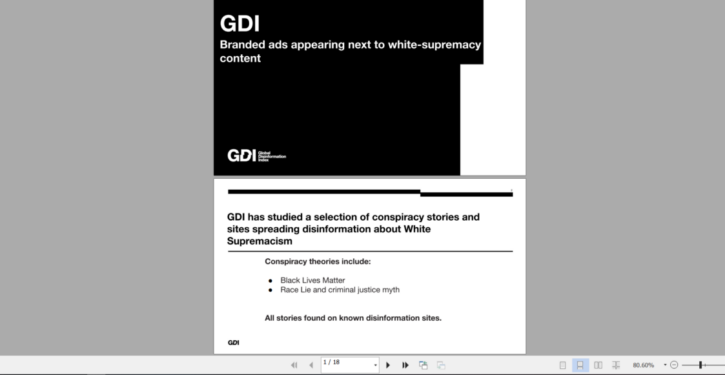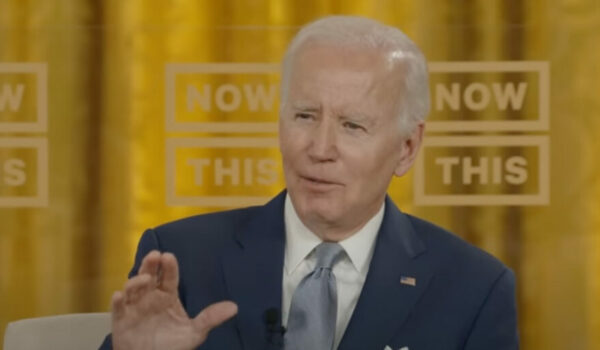
Government officials and government-funded groups have already sought to define “disinformation” to include truths that are adversarial to the government, or truths that might fan hostility toward groups deemed to deserve special protection. For example, saying that a virus escaped from a laboratory in China was deemed “disinformation” even if the virus actually did escape from a Chinese lab, because that might undermine trust in the government, or supposedly fan prejudice against Chinese people.
But bans on “disinformation” would not squelch enough speech to satisfy them. So now, they want to ban “malinformation,” too. Syndicated columnist Jacob Sullum writes about a new, more expansive category called “malinformation,” which would be applied to truthful, factual information even when it does not constitute “disinformation.” As he notes, the crusade against “malinformation” “explicitly targets inconvenient truths”:
Last month, I noted that the Centers for Disease Control and Prevention had repeatedly exaggerated the scientific evidence supporting face mask mandates during the COVID-19 pandemic. Facebook attached a warning to that column, which it said was “missing context” and “could mislead people.”
According to an alliance of social media platforms, government-funded organizations, and federal officials that journalist Michael Shellenberger calls the “censorship-industrial complex,” I had committed the offense of “malinformation.” Unlike “disinformation,” which is intentionally misleading, or “misinformation,” which is erroneous, “malinformation” is true but inconvenient.
As illustrated by internal Twitter communications that journalist Matt Taibbi highlighted last week, malinformation can include emails from government officials that undermine their credibility and “true content which might promote vaccine hesitancy.” The latter category encompasses accurate reports of “breakthrough infections” among people vaccinated against COVID-19, accounts of “true vaccine side effects,” objections to vaccine mandates, criticism of politicians, and citations of peer-reviewed research on naturally acquired immunity.
Disinformation and misinformation have always been contested categories, defined by the fallible and frequently subjective judgments of public officials and other government-endorsed experts. But malinformation is even more clearly in the eye of the beholder, since it is defined not by its alleged inaccuracy but by its perceived threat to public health, democracy, or national security, which often amounts to nothing more than questioning the wisdom, honesty, or authority of those experts.
Taibbi’s recent revelations focused on the work of the Virality Project, which the taxpayer-subsidized Stanford Internet Observatory (SIO) launched in 2020. Although Renée DiResta, the SIO’s research manager, concedes that “misinformation is ultimately speech,” meaning the government cannot directly suppress it, she says the threat it poses “require[s] that social media platforms, independent researchers and the government work together as partners in the fight.”
That sort of collaboration raises obvious free speech concerns. If platforms like Twitter and Facebook were independently making these assessments, their editorial discretion would be protected by the First Amendment. But the picture looks different when government officials, including the president, the surgeon general, members of Congress, and representatives of public health and law enforcement agencies, publicly and privately chastise social media companies for not doing enough to suppress speech they view as dangerous.
Such meddling is especially alarming when it includes specific “requests” to remove content, make it less accessible, or banish particular users. Even without explicit extortion, those requests are tantamount to commands, because they are made against a backdrop of threats to punish recalcitrant platforms.
The threats include antitrust action, increased liability for user-posted content, and other “legal and regulatory measures.” Surgeon General Vivek Murthy said such measures might be necessary when he demanded a “whole-of-society” effort to combat the “urgent threat” posed by “health misinformation.”
In a federal lawsuit filed last year, the attorneys general of Missouri and Louisiana, joined by scientists who ran afoul of the ever-expanding crusade against disinformation, misinformation, and malinformation, argue that such pressure violates the First Amendment. This week, Terry A. Doughty, a federal judge in Louisiana, allowed that lawsuit to proceed, saying the plaintiffs had adequately alleged “significant encouragement and coercion that converts the otherwise private conduct of censorship on social-media platforms into state action.”
Doughty added that the plaintiffs “have plausibly alleged state action under the theories of joint participation, entwinement, and the combining of factors such as subsidization, authorization, and encouragement.” Based on that analysis, he ruled that the plaintiffs “plausibly state a claim for violation of the First Amendment via government-induced censorship.”
The press is supposed to serve as a watchdog over the government, exposing government abuses of power, not be the government’s lapdog. So the press should criticize the government when it misbehaves. But the government’s allies may label such criticism as “disinformation.” A recent example of this is the government-funded “Global Disinformation Index,” which blacklists news outlets critical of the Biden administration in an effort to starve them of advertising dollars. Meanwhile, it praises progressive pro-Biden “news” outlets such as HuffPost that have lost libel lawsuits after repeatedly making false claims, giving them its highest ratings despite their history of factual errors because of how they gullibly repeat Biden administration talking points praising Biden and attacking his critics.
As Professor Michael Munger notes, “the worrisome thing” about this “is that the U.S. government pays substantial sums to a foreign organization whose literal, self-professed job is to pressure advertisers to boycott publications that….disagree with the U.S. government.” As the New York Sun notes, the London-based “Global Disinformation Index defines ‘disinformation’ as narratives that are ‘adversarial’ to democratic institutions” — that is, the government — “or at-risk groups.”
As a result, GDI views publications that publish criticism of the government to be “misinformation,” even when they make no factual errors. GDI claims that the 10 “riskiest” news outlets for disinformation are the New York Post, Reason, the American Spectator, Newsmax, the Federalist, the American Conservative, One America News, the Blaze, the Daily Wire, and RealClearPolitics. These are all either conservative publications that criticize the Biden administration, except for Reason, a libertarian magazine that criticizes civil-liberties violations by both Democrats and Republicans, and RealClearPolitics, a political news and polling-data aggregator.
Its explanation for giving these publications bad ratings does not even suggest that most of them made factually false claims. GDI’s explanation of its rating for the New York Post admitted that “GDI’s study did not review specific high-profile stories and attempt to determine whether they were disinformation.” The closest it came to asserting factual inaccuracy was in explaining its rating of the American Conservative, which it alleged — without any specific examples — was prone to “unsubstantiated claims” and “logical fallacies.”
By contrast, GDI gave high ratings to left-wing publications such as HuffPost that frequently make false claims and engage in slanted, sensationalistic coverage. GDI’s co-founder, Clare Melford, wrote for HuffPost in the past. GDI claimed that “HuffPost largely featured fact-based, unbiased content free from sensational text or visuals. This domain also refrained from perpetuating divisive narratives…” It claimed that the “ten lowest risk online news outlets” included Huffpost, Buzzfeed News, NPR, ProPublica, the Associated Press, Insider, the New York Times, USA Today, and the Washington Post.
As the New York Post notes, these left-leaning publications given good ratings by GDI are all friendlier to the Biden administration: “The outlets it labels less risky — NPR, BuzzFeed, the AP, The New York Times and the like — are all those that happily parrot whatever actual disinfo comes from the White House or other corridors of power, up to and including the 100% fake Steele Dossier.” GDI has nothing bad to say about left-wing news outlets that have committed libel or journalistic hoaxes, such as Rolling Stone, which peddled a gang rape hoax and had to pay $1.65 million to settle a defamation lawsuit against it.



